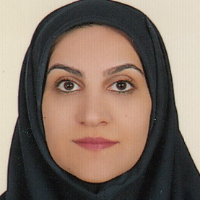Short Chain Fatty Acid Sodium Butyrate Increases miR-21, miR-143 and miR-145 Expression in Human Colorectal Cancer HCT-116 Cell Line
Sodium butyrate (NaBu) is a short-chain fatty acid; it is one of the histone deacetylase inhibitors, which can alter both genetic and epigenetic expressions. The present study aimed to elucidate the effect of NaBu on the expression of miR-21, miR-143, and miR-145 in human colorectal cancer HCT-116 cell lines.
This study was done in Tehran Medical Sciences, Islamic Azad University, Tehran, Iran. HCT-116 cell line was treated with diverse concentrations of NaBu (6.25 mM to 200 mM) at 24, 48, and 72 h. MTT assay was used for assessing the cytotoxicity. Quantitative Real-Time-PCR was performed to investigate the gene expression of miR-21, miR-143, and miR-145.
IC50 values were evaluated by MTT assay. IC50 for HCT-116 was 50 mM, 12.5 mM, and 6.25 mM for 24, 48, and 72 h of incubation, respectively. According to the Real-Time-PCR results, 50 mM NaBu after 24 h caused a significant up-regulation in the expression of the miR-21, miR-143, and miR-145 (P<0.05). In 48 h, incubation, 12.5 mM NaBu caused a significant up-regulation in the expression of the miR-21, miR-143, and miR-145 (P<0.05). In treated cells with 6.25 mM NaBu after 72 h of incubation caused a significant up-regulation in the expression of the miR-21, miR-143, and miR-145 compared with untreated cells (P<0.05).
The upregulation of miR-21, miR-143, and miR-145 expression are mediated by transcriptional regulation and the activation of this miR promoter is modulated by histone acetylation. The employment of NaBu may represent a promising approach for improving HDACi drug-based therapies for colon cancers.
-
Evaluating the expression of LKB1, SHMT1, and GLDC genes in Acute Lymphoblastic Leukemia patients
Pegah Farajzadeh, , Maryam Nabigol, Mehdi Allahbakhshian Farsani*
Iranian Journal of Pediatric Hematology and Oncology, Summer 2024 -
Study on the correlation between single nucleotide polymorphism frequency in TYK2 gene with COVID-19 disease
Hediyeh Tamimi, , Pooneh Rahimi *
Pars Journal of Medical Sciences,


